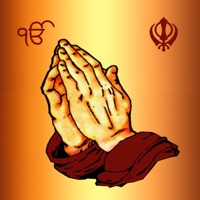Sri Guru Granth Sahib Ji Erfahrungen und Bewertung
Veröffentlicht von Sukhpreet Singh on 2024-02-19🏷️ Über: Guru Granth Sahib is the religious scripture of Sikhism, regarded by Sikhs as the final, sovereign, and eternal living Guru following the lineage of the ten human Gurus of the Sikh religion. Adi Granth, the first rendition, was compiled by the fifth Sikh Guru, Guru Arjan.













